Helge’s has a great amateur radio webpage. I really enjoy his WWII direction finding equipment. The technology supporting RF direction finding really has not changed much other than automating the process.
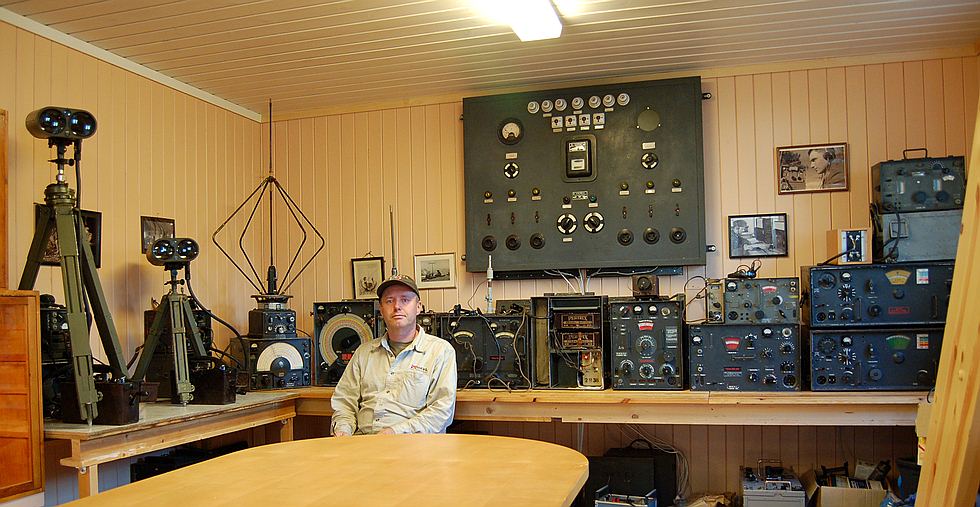
Amateur Radio – a hobby where people talk about their hobby using their hobby.
Helge’s has a great amateur radio webpage. I really enjoy his WWII direction finding equipment. The technology supporting RF direction finding really has not changed much other than automating the process.

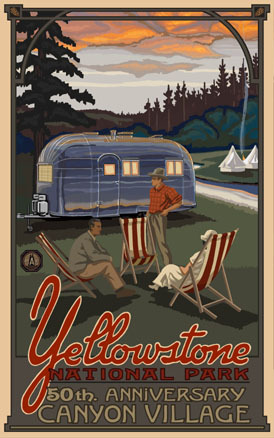 Canyon Village, Grant Village, Yellowstone National Park
Canyon Village, Grant Village, Yellowstone National Park
Monday, July 11th – I have been regularly using my VX-8GR handheld to listen to the local NOAA weather radio station. The weather forecast last night was pretty grim. Temperatures dropping. Snow. Snow? In July? Yes. I decided to spend Sunday night packing up. Sarah helped me put the bikes on the station wagon. We put away the folding chairs and rolled up the awning. I had really been enjoying our campsite at Canyon (J200). The Canyon campground is huge. The camping sites are nice – lots of trees and separated at a good distance. Quiet. Canyon also has laundry facilities and showers. Both worked out well. They even have over sized washers and dryers for sleeping bags and comforters. But it was time to move. We’d been here over a week.
We woke up to light snow. It wasn’t really sticking to the ground but the temps were way down. We broke down the remainder of camp and head out. We made use of the campground’s dump station and then made the short drive out down to Grant Village. They have a full-service gas station were I was able to fill up my propane canister. After it was filled, I kept smelling gas. I didn’t know if the canister was leaking or I had some type of line leak. Eventually the smell dissipated.
While I enjoyed Canyon campground, Canyon Village is too busy. Lots of people, lots of craziness. Grant Village is the opposite. The campground is not as nice. Less trees. Sites are a bit closer together. But the village part is low key. Much less people. The visitors center at Grant is not as fancy as the one at Canyon. But the ranger programs at Grant Village were a lot more personal. There is a book shop at the visitors center. A daily ranger program on the back deck, one down near the water, and one at their amphitheater.
Grant also has a very large general store (just a bit smaller than the one at Fishing Bridge). Attached the store is a counter-service eatery with your standard fare (although they make an effort to have healthy choices). The eatery includes ice cream, served by the scoop. My favorite was called Moose Tracks. There are also two restaurants. One is somewhat fancy and requires reservations. The other is right on the lake and serves an Asian fusion menu. Emily acquired a liking for potstickers. Both the girls became intrigued with chopsticks.
Did I mention the ranger programs? We attended a few on the back porch of the visitors center. There were others that took place down by the lake that where meant for young families. Always great topics. Then we would go to the evening programs at the amphitheater. Fairly quickly, all the rangers at Grant Village began to get to know Sarah and Emily. Both really enjoyed participating in the programs – raising their hands to answer questions. My favorite evening program was about the history of the US Army running Yellowstone.
Backporch ranger program with Ranger Miles about bison.
Movie in the visitors center on the Yellowstone forest fire.
Ranger program near the lake was about bears and bear cubs.
Evening program with Ranger Miles about the history of wolves in Yellowstone.
We got to know the rangers so well, we knew all of them by name:
David
Ellen
Miles
Jon
Landon
Ali
Brian
Thank you Rangers!
Last summer when we were camping in the national parks, there were many campsites where we had no cell phone service. I am not complaining about that, but our work around to communicate back home to the XYL often required a trip to the pay phone (sometimes hard to find). I thought about perhaps using APRS’s capability of relaying short pieces of text as emails. Part of the problem is that there are many areas of the parks that don’t have any APRS digipeater coverage (Glacier and Yellowstone National Parks for example). How to get a message through?
Then I remembered my MARS station (AEN5AC) in Iraq. I was using an ICOM IC-7000 and an SCS PTC-IIusb modem to pass MARSGRAMS from my location north of Baghdad to another station at the US embassy in Qatar. The pairing worked quite well and I was consistently able to connect and pass traffic using PACTOR 3 at the 1400 baud rate. Could I use a similar setup to provide an HF email option while camping this summer?
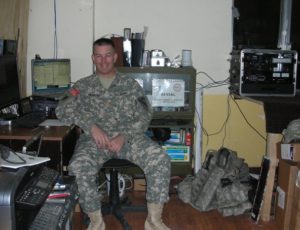
I dug out my SCS PTC-IIusb modem. I had not used it since shutting down the MARS station in June of 2008. Everything was still in the box. To include the cables necessary to interface the modem with an ICOM IC-706MKIIG… the same rig I use for HF mobile.
I pulled out my spare IC-706MKIIG. Coming back to Kansas from Field Day in California back in 2009, my IC-706MKIIG quit on me. I ended up buying a second at the HRO in Denver and sent the broke one to ICOM. ICOM fixed it and returned it. I kept it in the box and it went back on the shelf. I did order a 6 pin Molex connector with powerpoles to allow for an easy power connection (#9). I connected the two cables from the modem to the rig. Once cable is for the data and plugs into the 706’s 13 pin accessory connection (#4). The other cable connects to the 706’s CI-V interface (#6) to have the radio change frequencies based on what station is being contacted.
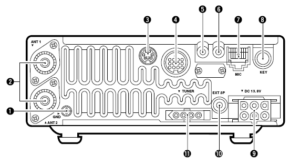
I had the basic hardware of a HF email station, except for a computer. I would need one that would function out of the vehicle. This would probably require a laptop. I also decided for the ease of simplicity that the computer should be Windows driven (instead of Linux). Gasp! The bottom line is that the software and drivers required to send email via HF and use the SCS PTC-IIusb modem is Windows based. The answer ended up being an Dell XPS 15.

Using a Windows based computer helped me with a number of summer travel tasks that could not be accomplished by my small Linux laptop:
(1) Run the software required for HF email (more on Winlink and Airmail later)
(2) Run ARRL’s TravelPlus for Repeaters
(3) Run RT Systems radio programming software for my TM-D710A
(4) Run RT Systems radio programming software for my VX-8RGs
(5) Read the SD card from my Canon digital camera
Interestingly enough, the new laptop does not have a CD/DVD drive nor an RJ-45 connection for a LAN cable. Neither of these have been a show stopper yet.
ARRL’s TravelPlus for Repeaters
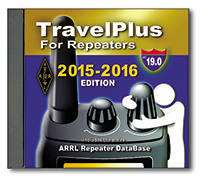 I had purchased TravelPlus for Repeaters with the intent of installing it on my existing Linux laptop and running it under a VirtualBox Windows session (similar to how I run iTunes on my Linux laptop). However the software failed to install. I tried troubleshooting and looking at suggested fixes found on the forum sites but still had no luck. I tried installing TravelPlus using WINE. It installed but would not run as well.
I had purchased TravelPlus for Repeaters with the intent of installing it on my existing Linux laptop and running it under a VirtualBox Windows session (similar to how I run iTunes on my Linux laptop). However the software failed to install. I tried troubleshooting and looking at suggested fixes found on the forum sites but still had no luck. I tried installing TravelPlus using WINE. It installed but would not run as well.
Dell XPS 15 to the rescue. As the laptop does not have a CD/DVD drive, I copied the drive onto network storage. I then was able to install TravelPlus over the network and it is working without issue.
RT Systems Programming Software
The RT Systems programming software works fine under a VirtualBox Windows session. As I was moving all my vehicle related radio/computer tasks to the new Windows laptop, I attempted to install the programming software for the TM-D710A (used for beaconing the location of my vehicle and talking on VHF/UHF). Following a similar procedure that worked for TravelPlus, I copied the programming software from the install disks to a network drive. The software installation for the TM-D710A worked without a hitch. The software for the VX-8RGs (HTs we use for around camp and hiking) failed to load. The error said that I must use the original disk to install. A big challenge when the laptop doesn’t have a CD/DVD drive. The work around is that you find another Windows computer with a CD drive, load the software CD, then back on the driveless laptop, map the CD drive (like you would map a network drive). That worked and I was able to install the programing software for the VX-8GR.
HF Email Software
There are two main choices for software to allow for HF email: RMS Express and Airmail. I installed both. Airmail was the same program I used in Iraq and it offered easy configuration with the IC-706MKIIG and the SCS PTC-IIusb.
I now had all my equipment for a test run setup in my basement hamshack: spare IC-706MKIIG, SCS PTC-IIusb, and the Dell XPS 15 with Airmail. I connected the IC-706MKIIG to my Elecraft tuner and used my existing G5RV antenna. Airmail configures easily. The software has a list of stations offering mailbox services that can be viewed on a propagation chart by frequency and distance. Based on time of day, I selected a station in Texas that offered a 40M PACTOR 3 connection. Airmail allows me to click on the frequency in the propagation chart which then changes the dial frequency of the radio. After listening to see if there were any ongoing connections, I initiated contact. The modem lights flashed and the rig clicked between transmit and receive. The connection was made and I was able to send a test email as well as a position report.
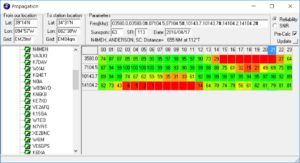
Success! The position reports that go into the Winlink system are copied over into APRS. Now, even if I am not able to reach a digipeater with my VHF APRS beacon, I can send a position report over HF to let the XYL know where we are.
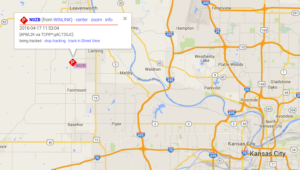
I then thought about the steps I would have to take of transitioning my IC-706MKIIG configured for HF mobile to be ready to work with the PTC-IIusb to send email. As the remote head is located up near the drivers seat, this would present problems with being able to observe the modem, laptop, and radio control head all at the same time.
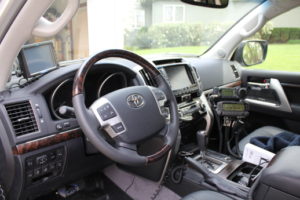
What if I just dedicated the spare IC-706MKIIG rig to the task of HF email? It would save me time and bother in pulling and plugging cables. It would also give the camping option of being able to operate HF from outside the vehicle.
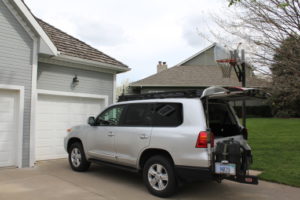
Using an additional iPortable box, I rack mounted the spare IC-706MKIIG and the SCS PTC-IIusb. Now I will have a spare HF rig with me, so if one goes out I will still be operational. I also attached the Tarheel screwdriver antenna’s rocker switch to raise and lower the antenna on the side of the box. During normal HF mobile operations, the TurboTuner (connected to the other IC-706’s tuner connection and CI-V connection) manages achieving a correct match between the operating frequency and the screwdriver antenna.
I only have the one TurboTuner. The TurboTuner requires a connection to the CI-V. So does the SCS PTC-IIusb. My solution was to leave the TurboTuner alone. Instead, using the rocker switch, I can manually tune the antenna while visually observing the 706’s SWR meter.
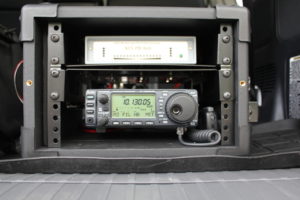
To transition between using the 706 dedicated to HF mobile to the 706 now dedicated to HF email, I have to do the following:
(1) disconnect the antenna feedline from the TurboTuner
(2) disconnect the control line that goes from the TurboTuner to the Tarheel screwdriver antenna
(3) connect the antenna feedline directly to the HF email 706
(4) connect the control line to the rocker switch
(5) connect the laptop to the SCS PTC-IIusb via a USB cable
(6) connect the iPortable’s powerpole connection to the junction box in the back of the vehicle
… then I am ready to go. The iPortable box rests nicely on the vehicle’s tailgate, next to the laptop. All at about lawn chair height. Not only can I use this setup to send email via HF, but I can also use it for causal National Parks On The Air contacts as well.
What’s left to do:
(1) Constant cooling fan modification for both IC-706s (see AD5X’s article)
(2) An extended control cable for the Tarheel screwdriver antenna. This will allow me to further remote away from the vehicle, but still use the antenna.
(3) A length of antenna feedline for remoting.
(4) A length of powerpole-ready powerline to attach to either the travel trailer battery or directly to the spare vehicle battery… again for remoting away from the vehicle.
(5) I have a set of Heil headsets that worked with my IC-7000. I think if I get the AD-1ICM, I should be able to use them with the 706.
(6) A Heil HS-2 hand PTT switch to use with the headset.
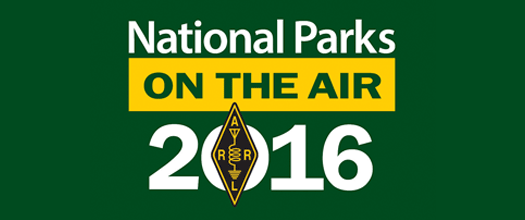 The National Parks on the Air (NPOTA) is off and running. Making contact with a handful of stations currently operating from NPOTA locations has made me wonder if the ARRL has had a good idea with NPOTA as a way to help celebrate the anniversary of the National Park Service.
The National Parks on the Air (NPOTA) is off and running. Making contact with a handful of stations currently operating from NPOTA locations has made me wonder if the ARRL has had a good idea with NPOTA as a way to help celebrate the anniversary of the National Park Service.
From ARRL: “Throughout 2016, Amateur Radio will be helping the National Park Service celebrate their 100th anniversary. Hams from across the country will activate NPS units, promote the National Park Service and showcase Amateur Radio to the public.”
I am a huge fan of both the National Parks and the National Park Service. Anyone who is interested in the history of our National Parks would be well rewarded to start with the Ken Burns documentary The National Parks: America’s Best Idea. Yellowstone generally gets credit for being the first National Park back in 1872. However, the National Park Service was not established until 1916. That period in between provides us a very good reason that there are times when we need a government organization to protect us from ourselves. During that in between period, the Army was given the mission of attempting to protect both Yellowstone and Yosemite. Like most missions the Army received, they were underfunded, under equipped, and undermanned. They did, however, do the best they could to protect these amazing areas. Many Americans saw these new National Parks as areas for economic exploitation. If it wasn’t for many individuals working long and hard for the establishment of the National Park Service, it is very likely we would not be able to enjoy the parks we have today. Stephen Mather and Horace Albright were the two primary individuals who secured the establishment of the National Park Service. Ken Burns talks about these two individuals in his documentary and there are also a few books that do a great job telling the story (Creating the National Park Service: The Missing Years and The Birth of the National Park Service: The Founding Years, 1913-33).

The National Parks exist for our enjoyment. Generally that enjoyment manifests itself in some type of hiking, camping, fishing, watching for wildlife, or learning about history. This interaction between Park and citizen can be passionate, emotional, revitalizing, inspirational, and an educational experience.
With all that being said, I was a bit surprised to hear stations making contacts for NPOTA locations like it was a contest. Each NPOTA location is identified by a letter-number combination. No discussion of where they actually were. No description, no discussion. It is a bit sad to see there is a Leader Board – which only facilitates looking at NPOTA as a contest rather than an actual celebration.
I also wonder how these activations are impacting those non-amateur radio enthusiasts who are visiting a NPOTA site. Is this putting amateur radio in the best light?
Are these NPOTA activations promoting the National Park Service or showcasing Amateur Radio to the public?
If so, how?
What would Stephen Mather and Horace Albright think about NPOTA?
It will be interesting to see how NPOTA progresses over the coming weeks and months.
Finally!
I have been known to procrastinate now and again. One thing on my to do list was uploading my log from Iraq (YI9MI) to Log Book of the World. When I initially tried to do it a few years back (my operation was 2007-2008), I had difficulties getting a certificate despite having the correct paperwork from the Iraqi government approving my operation.
Now that I am on my Winter Break, I decided to re-engage and was met with extraordinary help by ARRL’s Norm Fusaro, W3IZ (aka Mr. Log of The World). I emailed him my paperwork and he immediately turned around and emailed me back my certificate. Huzzah! But not quite yet….
I tried to upload my log, but none of the entries would parse. 🙁
At the time of my Iraq operation, I was using HRD for my logging and had an HRD generated .adi file. I decided to load that file into fldigi and then export it back out as an .adif – not sure if that was the trick, but the log parsed! Hazzah!
Hopefully I delivered early Christmas presents to any individuals out there who were waiting for a YI entity for an award. I am so relieved to finally get that log uploaded and into LoTW.
Every now and again I still get a QSL card to confirm. I have a nice hard copy of the log printed out which allows me to confirm the contact and record that I am sending out the confirmation QSL card.
If you think I still owe you a YI9MI confirmation either by QSL card or LoTW – please let me know.
 Excitement in the shack! We’ve had a new addition. I have had my Elecraft K3 for quite a while. Nothing but positive words about it. It has never let me down.
Excitement in the shack! We’ve had a new addition. I have had my Elecraft K3 for quite a while. Nothing but positive words about it. It has never let me down.
We’ve all heard about the K-Line. I am assuming that the term K-Line is an omage to the Collins S-Line.

Through my research of MARS, I know that the Collins S-Line was the choice of MARS stations. Collins even had a repair shop located at the major air base outside of Saigon.

Although I have never operated any Collins gear, from what I’ve read it was built like a tank but clearly was designed to have aesthetic appeal. Elecraft is aiming to achieve the same.

I’ve started my attempt at building my K-line with the addition of the Elecraft amp and tuner. Both easily interface with each other and the K3. This allows for seamless band switching and tuning.
While only a 500 watt amplifier, I have already noticed an notable increase in my ability to make contacts and get to the top of the pileup. Band conditions helped, I’m sure – but it was still enjoyable making contacts with South Africa, Findland, the Canary Islands, and Aruba. Stateside contacts have also seemed to be easier to make with a little extra punch.

I had the opportunity to be a guest operator at WW1USA today. WW1USA is a special event station located at the National World War I Museum in Kansas City, MO.
There was a request for operators that I saw on Larry’s List. Larry’s List is an awesome resource for hams in the greater Kansas City area. Not just another email list-serv, but a truly valuable resource in understanding what is happening in the area. From community events, swap-n-shop, club meetings, weekly nets to nearby hamfests – Larry’s List is one stop shopping for everything you need to know about amateur radio in Kansas City.
I read about the opportunity to sign up for operator/logging slots during this weekends activation of WW1USA and thought it would be a neat opportunity.
Arriving about 10 minutes before my shift started, I was immediately directed to a position and asked to start logging for an operator working contacts on 20 meters. The brief instructions I received was to log the callsign, name, and state of the contact. I think I recognized the logging program as N3FJPs logging program for Windows. I had used this program before during Field Day 2009 with my dad, KD6EUG.
As I adjusted into the chair, my ear turned towards a speaker, my fingers pecking away entering callsigns… I noticed there were not any radios here! Each of the operating positions were laptops, using HRD to control a rig at a remote location. Pretty cool. As I believe it would have been fairly difficult to raise antennas on top of the museum and then route feedlines down to an operating room, the planners of this special event used internet connectivity. To be honest, as an operator, the fact that I was not in front of the rig was really not even apparent.
After twenty minutes, I slid into the operators chair and proceeded to work contacts for the next two hours. Again, the planning effort of this operation became evident when I saw a short script in front of me for calling CQ as well as providing answers on how calling stations could QSL the contact. When a station at the distant end asked for more information about the reason for the special event, I was handed another card which talked about commemorating the failed Gallipoli campaign.
I had a great time making contacts: stations all over Canada and the United States. What a fun time!

Bill Murray’s Stripes was one of my favorite movies growing up. Could it have even influenced my career choice later in life? Perhaps the most engaging piece of the film was the EM-50, the Army’s Top Secret armored personnel carrier that looked like an RV. The EM-50 was based on GMC’s 1976 motorhome.

Stripes culminates with our protagonist taking the EM-50 across the Iron Curtain to rescue his fellow soldiers. Unlike the production model of the ’76 motorhome, the EM-50 packed a bunch of firepower that allowed it to take on all threats.
As so often in life when the truth is stranger than fiction, the Army did use a GMC motorhome to support the color guard that support the American Freedom Train. I would be curious to know if whoever wrote the script bumped into this vehicle along the Freedom Trains route.
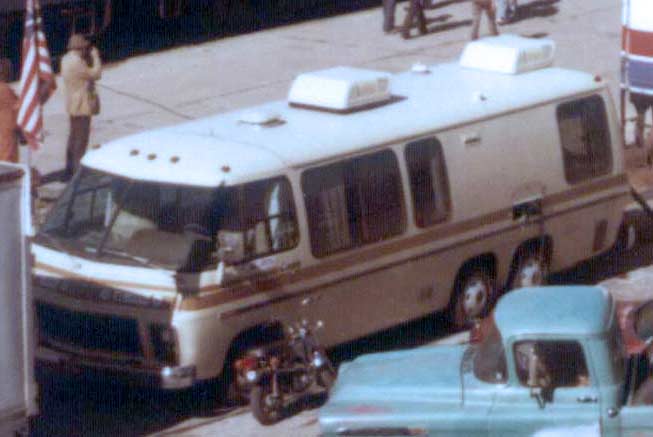
Back in 1987 I actually spent 6 weeks at Fort Knox, KY where the movie was filmed. The rumor circulating around was that in one of the barracks latrine there was graffiti on the inside of a stall door that said “Bill Murray Was Here.” I never did find it. And that’s a fact, Jack.

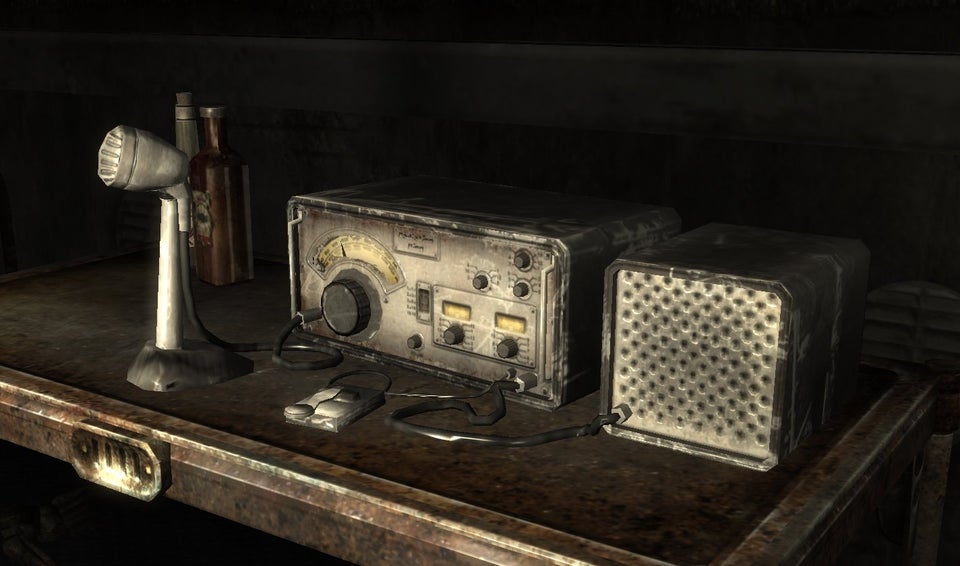
The static crashes were coming more frequently now and I could see the lightning off in the distance. I had been driving since the early afternoon and only had about two hours left until I arrived home. The sun had set an hour ago but the moon was not up yet and it was dark as pitch. My headlights cut through the night. Shortly before the Autumn sunset, the clouds moved in from the west with the winds gusting against my pickup truck as I headed south. The rain was off and on, more of a nuisance than an impediment to driving.
It had been a long day of meetings and I looked forward to getting behind the wheel. My mobile setup in the pickup is simple: an IC-706MKIIG and a screwdriver antenna – just 100 watts. It was relaxing to hear the rush of white noise as the rig powered up and my screwdriver antenna spun up to a good match for 40 meters. I had enjoyed a few QSOs as I barreled down US Interstate 29. Traffic was light. After the sun set, the band started to go long and decided to drop down 75 meters. The screwdriver antenna coil whirled again, sending the whip up a bit higher.
As I slowly spun the dial, I heard a call coming just above the S5 noise level. “CQ CQ CQ, this is W0XRR, Whiskey Zero X-ray Romeo Romeo, calling CQ and listening.”
Gripping the handmike, I replied to the call, “W0XRR, this is Kilo Delta Seven Papa Juliet Quebec, KD7PJQ, the name is Scott and I am mobile, south on I-29.” Releasing the Push To Talk button, the noise rushed back to fill the cab of my pickup. The rain started to pick up, beating against the roof and windshield as I continued south.
“NI0L, Scott, fine business and thank you for answering my call. Name here is Bert, Bravo Echo Romeo Tango. My QTH is just outside of Atchison, Kansas – Atchison, Kansas. Good signal tonight, I would not have guessed you were mobile. Ok Scott, back to you.” Bert’s signal had gotten stronger and I easily copied him through the noise. His audio quality was as smooth as silk… no processing.
“Solid copy all Bert, you’ve got a solid signal tonight, started off a bit weak but has picked up to a solid 57 to 58. Ok on your QTH in Atchison. I am headed south on I-29. Just passed Hamburg and crossed into Missouri from Iowa. My destination is not far from your QTH. I am headed to Fort Leavenworth, Kansas. Back to you, Bert.” Despite the poor weather on the road, I was anticipating this was going to be a good QSO and hoped our ragchew would keeping me company on a pretty miserable evening to be out on the road.
“Well Scott, I am glad to make the contact. The weather is bad here and I imagine it is worse up your way. I was down here in my basement shack and decided I would warm up the tubes and see what I could find on the bands. Ok on Fort Leavenworth, just a bit south from here. I have not been out to the fort for a number of years but know it well. I retired sometime back and now spend a lot more time down here in the basement either spinning the dial or tinkering with one project or another. Lets hear from you, Scott. What’s put you out on the road tonight?” Bert asked.
I told Bert how I had been at a conference on Offutt Air Force Base in Nebraska. The event had ended a day early and I was trying to make my way back home to see the family and enjoy a full weekend. I explained how I had been in the Army for over two decades, had originally gotten my call when I was stationed at Fort Lewis, Washington, and had recently been transferred to Fort Leavenworth with my family. “We really enjoy the area. I am thinking about retiring there in Leavenworth. Back to you, Bert,” my index finger released the PTT.
Bert came back to me with his signal competing with the noise floor. “Fine business all, Scott. I used to be in the Signal Corps and did 30 years in the Army. Was stationed out there at the fort for my last assignment as well. Good posting there at Leavenworth. Glad to hear you and your family are enjoying it.” He told me about how he used to support an air defense unit that was stationed on Fort Leavenworth. His signal detachment was responsible for integrating all the communications for the Nike missile batteries in Kansas, Missouri, and Nebraska. We continued to trade war stories for another twenty minutes or so. Then his signal began to fade.
“I am starting to loose you Bert, so I better wrap this up. I really appreciate the QSO and to make the contact. Any chance you will be at the hamfest in Raytown coming up the Saturday after next? A few miles southeast of Kansas City? It would be a great opportunity for an eyeball QSO… and I am buying the coffee. What do you say? Back to you, Bert.” The rain was a constant downpour now, rolling across the road in front of me.
No reply was heard except for a few static crashes from the lightning. “W0XRR, this is KD7PJQ, thanks again for the contact, 73 Bert!”
I had begun making my deliberate ‘s’ pattern through the rows of gear (… and, lets be honest, junk) when I saw a table with some nice Collins gear. There was the transmitter (a 32S-3A), a receiver (75S-3C), and even a Collins 30L-1 amplifier. The bearded oldtimer manning the table had his undivided attention focused on a breakfast burrito and it took a moment for him to wash down a deliberate bite with a drink of coffee.
“Good morning. Nice Collins S-Line! These are in great shape – looks like they’ve been well cared for. You don’t see these everyday. Why are you selling them?” I heard older hams talk about these Collins rigs, but I had never seen them before.
“Good morning… sorry you caught me in the middle of breakfast. Yup, this is a nice set. Not mine actually. We’re selling it for the widow of a Silent Key. I’ve got more boxes here of his stuff. I think all the manuals are in one of these,” the gentleman said as he turned in his seat a leaned over to pull an open box towards him.
“The lady gave us a call to come and clear out the ham shack. He’d passed away last year but it took her until now to finally part with the gear. We picked everything up earlier in the week. Took us two trips. Here’s one of the manuals,” he said as he handed me the manual for the 75S-3C, yellowed with age but well cared for.
I flipped through the book, noticing the margin notes,,, and then a QSL card fell out between the pages and onto the table. I looked at the callsign on the card – …W0XRR. Bert McKenzie, Atchison, Kansas. There was a picture of a Nike-Hercules black and white missile elevated at 45 degrees on a launch platform as well as the crossed semaphore flags of the Signal Corps.
“Wait… who’s gear was this? What was the call of the Silent Key?”
“Well, there’s his QSL card!” The oldtimer pointed to the card on the table. “This gear belonged to Bert… W0XRR,” the oldtimer picked up the QSL card from the table.
“But when was it you said he passed away?” I was confused and trying to sort out what I was hearing.
The oldtimer stroked his beard as he set the QSL card down, with the image of the Nike missile towards the table. “Let’s see… it’s been a little over a year now. Bert passed away last year around the end of October.”
I looked down again at the QSL card on the table. This side of the card had the blanks for QSO specifics. There was handwriting on it and I tentatively lifted the card up to get a better look. On it I saw my call, KD7PJQ…. 75 meters, the date of our QSO (… less than two weeks ago), a 5-7 signal report… and a circle around “PSE QSL”. The card slipped out of my hand and onto the table.
Dazed, I lurched away from the table. I needed fresh air and sunlight.
The oldtimer called after me, “Hey! You interested in the rig? Go ahead and make an offer.”
Author’s note: This story is a work of fiction. Names, characters, call signs, locations, and incidents are products of the author’s imagination. Any resemblance to actual events, locales, or persons, living or dead, is entirely coincidental.
